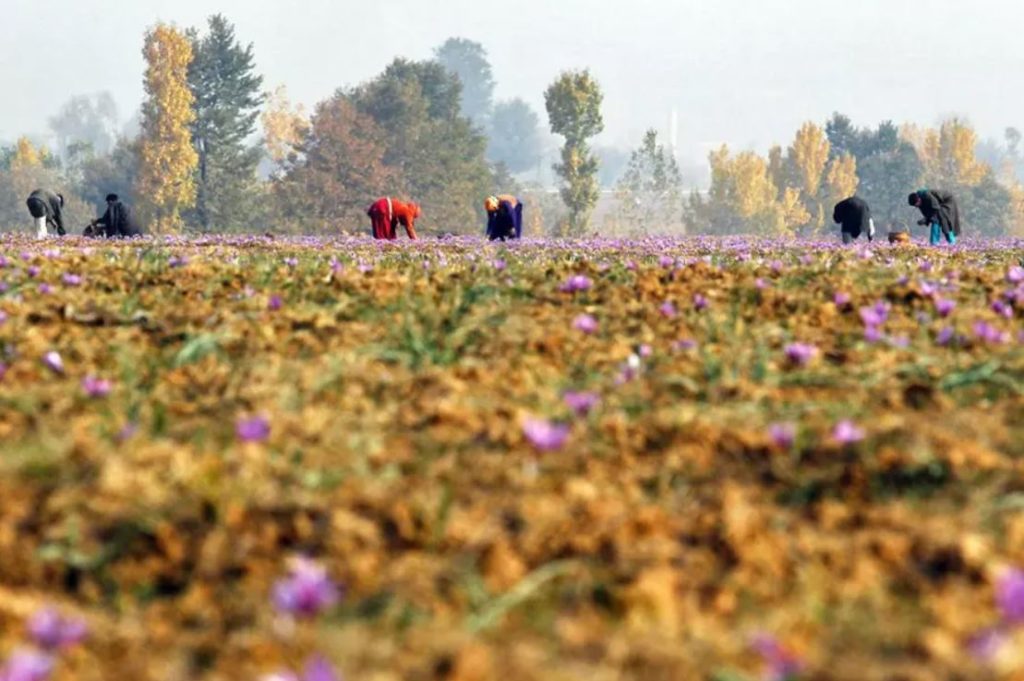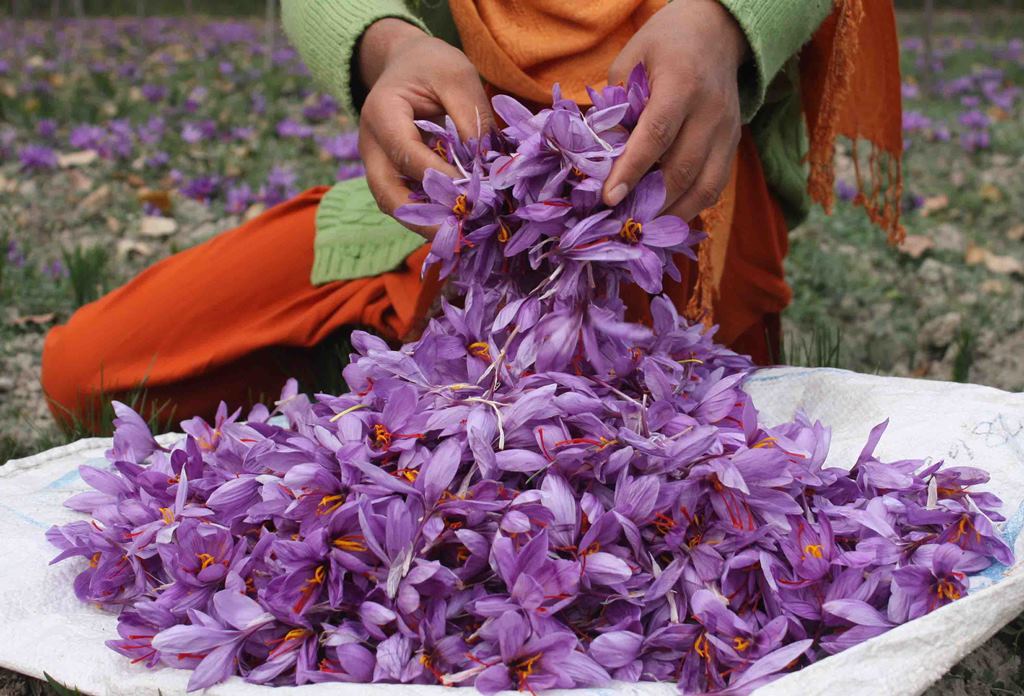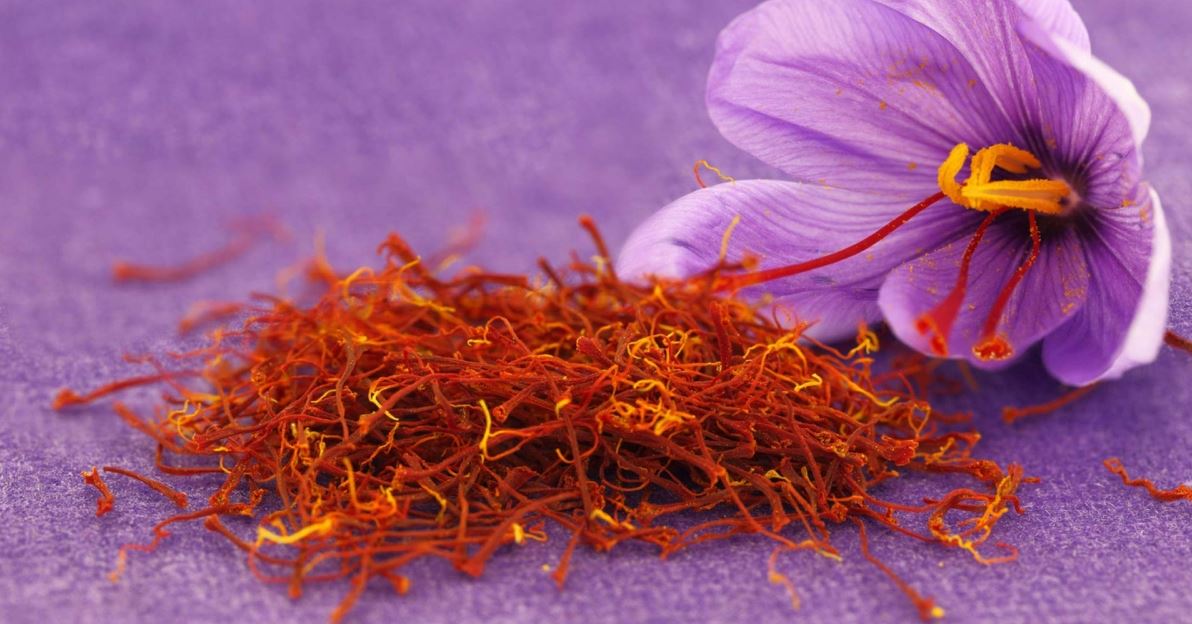

Elegant mountain crocus, the dried pistils of which, saffron, are considered the most expensive spice in the world can now grow in hot central India and bring significant hard currency income to the country. After many years of selection, the Indian scientists succeeded in developing a precious plant variety and selecting suitable greenhouse conditions for it, in which the demanding ‘northerner’ can grow there all year round without losing its wonderful culinary and healing properties.
For the first time in the history of cultivation of saffron, or crocus (Crocus sativus), as scientists and gardeners call it, they successfully achieved mass simultaneous blooming of the saffron blossoms on an industrial scale in the heart of India - the city of Pune (Maharashtra state). The homeland of the miniature flower is the harsh-climate northern Kashmir with its December and January ground frosts and very moderate and short-term warm summer season, and the temperature does not drop below +12oC in Pune even in winter, and in the summer, there is real heat - the air warms up to +42oC in the shade.

According to Suresh John, a senior fellow at the biochemical department of the National Chemical Laboratory at the Indian Council for Scientific and Industrial Research, the new high-density planting method for indoor growing yields amazing results.
The expert emphasized that their team created a biotechnological alternative to saffron cultivation having developed a new variety that can grow in a wider range of environmental conditions, and it was also able to standardize the plant parameters by synchronizing vegetation periods, soil and environment requirements.

It is noteworthy that the Pune crocuses bloomed almost simultaneously with the Kashmir crocuses, but only with a 2-3 week delay. The examination results showed that the final product - the dried saffron stigmas of the Pune flowers - turned out to be similar in composition and in no way inferior to Kashmir ones. The immediate plans of the Indian botanists and landowners include expanding the area of the priceless plant cultivation through the southern plantations.
Historical background
Saffron is considered one of the most ancient spices and it was already known 4000 years ago. It does not occur in the wild, it is cultivated from the beginning of the mankind’s cultural history. India is considered the birthplace of saffron. In the ancient Chinese herbal of the beginning of the 4th century A. D., it was mentioned that the area of saffron growing was Kashmir, where it was grown as an offering to the Buddha. This region has the most favorable conditions for growing this plant.
Kashmir saffron has a deep red color, long stigmas and a bright rich flavour. The saffron stigmas must be collected whole, and then dried naturally, that is, under the rays of the scorching sun. After that, you need to put them into water, which will help sort them. The highest grade are those that sink to the bottom, and the lowest are those that remain on the water surface. Second in quality is Spanish saffron. Iranian saffron ranks third in quality. It is most common than others in the global market and is relatively inexpensive. In Iran, there are a lot of factories producing and processing saffron, and the saffron exports bring the maximum foreign exchange profit to the state.
Priceless product
Saffron is the only spice, the price of which has not declined since the Middle Ages, when a pound of saffron could be exchanged for an Arabian horse. It is explained by the complex production procedure: one flower gives only three stigmas, and to get a kilogramme of the spice, up to 200,000 flowers are required. Moreover, even one saffron filament is enough to give the dish a specific flavour and a delicate sweet, hot-flavored and bitter taste.
Real, not fake saffron (often ground marigold stamens are passed off as saffron on the Russian market) is not a powder, but dry thin deep dark red filaments, their flavour is sweet and somewhat ‘medical’. They have a strong peculiar flavour and a bitter spicy taste. Gourmets describe saffron flavour as metallic-honey one with hints of fresh hay. Saffron stigmas are used for colouring and flavouring confectionery, in the preparation of broths and soups, pilaf (lamb-and-rise stew) and meat, as well as in the production of cheeses, sausages, and aromatization of wines and liquors. From time immemorial, they prepared kutia (boiled rice, wheat, etc., with raisins and honey) and baked bread with saffron in Russia. In the ‘Evenings on a Farm Near Dikanka’, Nikolai V. Gogol repeatedly mentioned saffron liquor. It is noteworthy that it also contains preserving agents - food prepared with saffron is stored for several days even at the room temperature.
Saffron also has excellent healing properties. According to Ayurveda, it “nourishes all body tissues, mainly blood, and in combination with milk, it strengthens the heart and nervous system, slows vision loss, decreases blood pressure, is useful in vascular diseases, regulates lipid exchange, and increases the body's resistance to stress”. This spice is useful in coronary heart disease and angina pectoris, atherosclerosis, and hypertension. Recently, the information has appeared about its widespread use in the treatment of the cancer forms that were previously considered hopeless. The fact is that crocetinic acid was obtained from saffron that is able to target the cancer stem cells, including those from a pancreatic tumor that, in principle, is not amenable to effective surgical treatment
